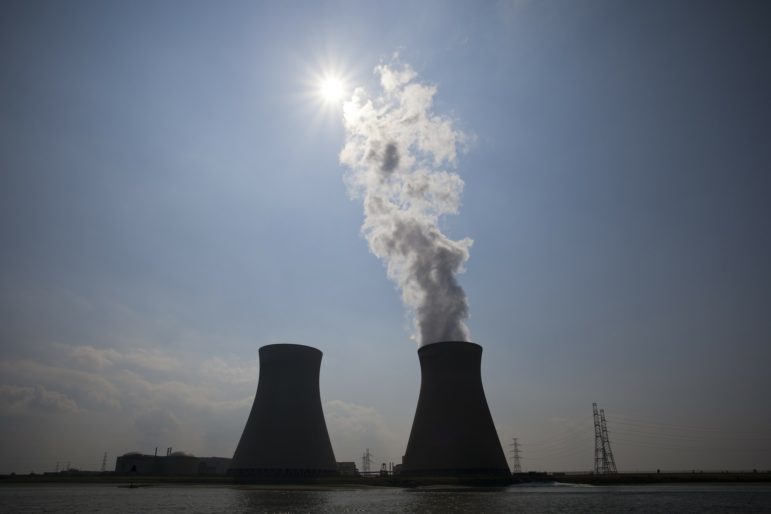
Yoichiro Tateiwa had the data for years before he noticed what it was showing all along: On March 12, 2011, 4 pm, 3 micro SV/h near Tokyo. This ionizing radiation level indicated volumes ten times higher than the safety limit, one day after a tsunami hit the Fukushima Daiichi Nuclear Power Plant.
“There wasn’t only dangerous radiation in Fukushima that day but also in Tokyo—a city where almost ten million people live,” said Tateiwa, the executive editor of Japan Center for Money and Politics. What U.S. government data had clearly shown, the Japanese government refused to admit.
The U.S. issued an advisory to its citizens living in Tokyo to evacuate the city immediately. However, Japanese authorities downplayed the alert as an overreaction. “They still deny knowledge about the elevated radiation levels in Tokyo. Even though we presented them with statistical data,” Tateiwa said.
Together with Professor Hideo Yamazaki of Kinki University, Tateiwa has spent years analyzing radiation measurements collected over two months following the disaster, from 22,000 spots across Japan. “It is amazing what data can tell you; how many stories it can tell you,” he said. “You know, what first got us suspicious were the tuna fish. Data showed that they had moved from the East coast to the West coast after the tsunami. And that it had everything to do with the accident.”
While hundreds of stories have been produced about the Fukushima disaster, many more remain untold. Tateiwa is determined to change that. He is raising money to set up a team of journalist to talk to experts, analyze data and dig deeper.
For example, there’s the impact on the service members of the American aircraft carrier, the USS Ronald Reagan, who helped evacuate people from Fukushima. Many now suffer from cancer. The have brought legal action against Tokyo Electric Power Company, which operated the nuclear power plant, but both the company and the Japanese government are rejecting that there is evidence connecting the disaster to their health conditions.
Tatweia’s reporting could impact millions of citizens.
“We need health check-ups on a broader scale, at least for people who were under 18 at the time of the accident and who were living in the contaminated area. And that also includes Tokyo,” he said. Up to now, the Japanese government has only implemented check-ups for people living in Fukushima.
Japan recently recognized the first Fukushima clean-up related death, after a plant worker died of lung cancer in September. With Tateiwa’s data and analysis, government officials might soon be forced to admit just how many people were affected.
Read Yoichiro Tateiwa’s full story here.

Finja Seroka is a journalist from Germany who has completed the KAS multimedia program. She has studied economics in Germany and Spain and now also works as a project manager at the renewable energy company Naturstrom AG.
